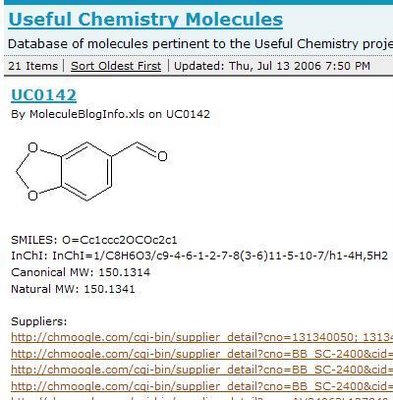C&E News Open Source Science Article
An article on Open Source Science came out today in Chemical and Engineering News.
The UsefulChem Project got a mention:
Last summer the Drexel University chemist began two simultaneous experiments in his lab. The first: to synthesize potential inhibitors for the malarial enzyme enoyl reductase, which the malaria parasite uses to produce essential fatty acids. The second: to post online all raw data that his five students produce (usefulchem.wikispaces.com).
He's also recently joined Synaptic Leap. "There's not a lot of people doing this now, but I think open source is going to become an important way to do science," Bradley says.
He says people posting to his blog have helped improve experimental conditions. "We had one posting that suggested a different concentration, improving the reaction."
When it comes to the issue of publishing, Bradley argues that open-source discussions are similar to conferences, where people openly discuss unpublished research and do not fear being denied the right to publish in a journal, assuming the science is good.




